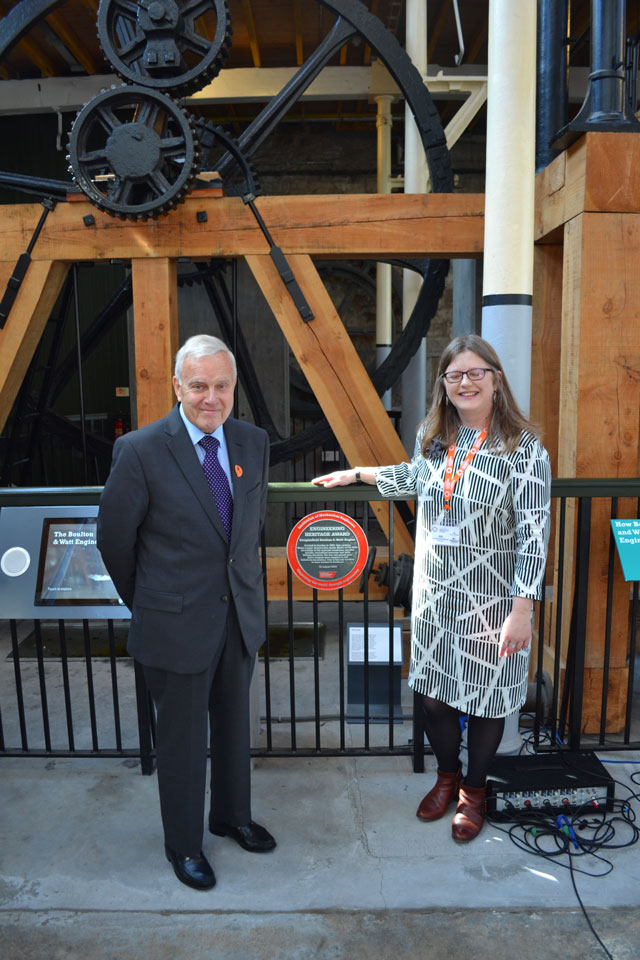
Dundee’s Boulton & Watt engine was presented with the Institution of Mechanical Engineers’ prestigious Engineering Heritage Award to recognize its importance as the only surviving Watt engine to have worked in Scotland and to remain close to its original workplace.
The award was made at an event on Sunday 25 August, the 200th anniversary of James Watt’s death.
The Engineering Heritage Awards recognize pioneering engineering artefacts, locations, collections and landmarks.
The Douglasfield Engine is one of only four surviving rotative engines by Boulton and Watt in the UK and is the only surviving Watt engine that worked in Scotland. The engine was used to turn machinery at William Sandeman’s Douglasfield Bleachworks, located on the Dighty Burn just outside Dundee.
At the beginning of the nineteenth century Douglasfield had the lion’s share of Dundee’s bleaching trade, an important element of the thriving local linen industry. Costing £517, the engine was ordered from Boulton and Watt in February 1801 and was installed at the bleachworks in March 1802.
William Edgar CBE, Institution Past President, who unveiled the commemorative plaque, said: “The Institution of Mechanical Engineers is delighted to be presenting this award to such an important piece of engineering heritage, the only surviving Watt engine to have worked in Scotland and the only one that remains close to its original place of working. It is especially significant given that today is the 200th anniversary of Watt’s death.’’
Ian Borthwick, Lord Provost of Dundee, said: “A positive partnership between Dundee City Council, Leisure & Culture Dundee and Dundee Heritage Trust saw the engine restored to working condition and installed into Verdant Works. So now local people as well as visitors from all over the world can see this internationally significant industrial heritage and learn more about its connection to Dundee’s important textile history.’’
The complex and ambitious project to restore the engine involved a team of experts from all over the UK and was supported by the Heritage Lottery Fund, Museums Galleries Scotland and the Association for Industrial Archaeology.
Gill Poulter, Heritage & Exhibitions Director, said: “The Boulton and Watt engine is undoubtedly the star exhibit of the stunning High Mill at Verdant Works so we are thrilled it has been recognized in this way. Having it on display here has enabled the Trust to expand our learning programmes into science and technology themes, showing the importance of mechanical engineering to modern life and hopefully inspiring the next generation of Scottish inventors’’.
The ceremony closed with a special ‘steam- themed’ musical performance from Quire who sang Andrew Lloyd Webber’s ‘The light at the end of the tunnel’ song about James Watt and steam power as well as a couple of Dundee mill songs.
Sunday 25 August was ‘Go Industrial Day’ and events to celebrate the James Watt anniversary are being held at a number of industrial museums across Scotland. www.goindustrial.co.uk
Wider celebrations of Watt’s life and work are taking place across Scotland as part of the www.jameswatt.scot group.

